
Exposé Online
What's old
Exposé print issues (1993-2011)
- 1 (October 1993)
- 2 (February 1994)
- 3 (May 1994)
- 4 (August 1994)
- 5 (October 1994)
- 6 (March 1995)
- 7 (July 1995)
- 8 (November 1995)
- 9 (March 1996)
- 10 (August 1996)
- 11 (February 1997)
- 12 (May 1997)
- 13 (October 1997)
- 14 (February 1998)
- 15 (July 1998)
- 16 (January 1999)
- 17 (April 1999)
- 18 (November 1999)
- 19 (May 2000)
- 20 (October 2000)
- 21 (March 2001)
- 22 (July 2001)
- 23 (December 2001)
- 24 (April 2002)
- 25 (September 2002)
- 26 (February 2003)
- 27 (August 2003)
- 28 (December 2003)
- 29 (April 2004)
- 30 (September 2004)
- 31 (March 2005)
- 32 (September 2005)
- 33 (May 2006)
- 34 (March 2007)
- 35 (January 2008)
- 36 (October 2008)
- 37 (July 2009)
- 38 (July 2010)
- 39 (Summer 2011)
Features
The Dance of Freedom and Form —The Adam Rudolph Interview
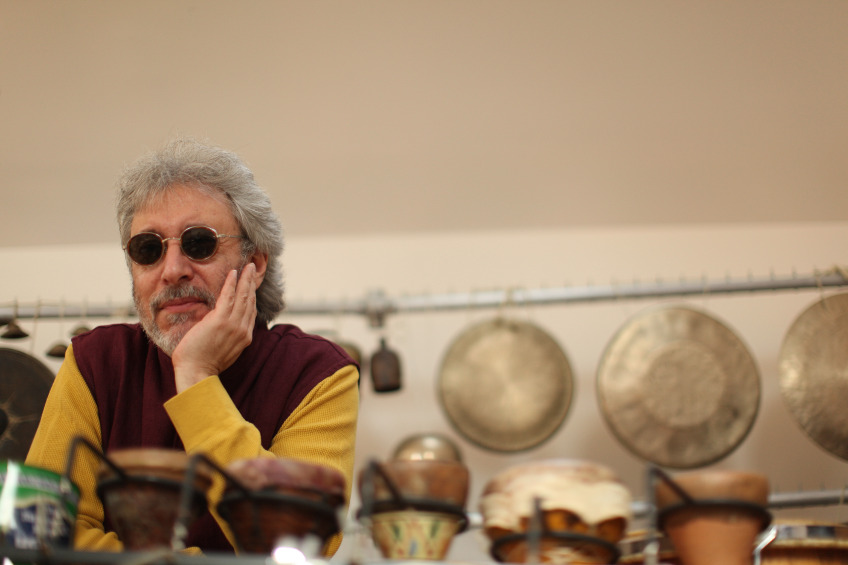
With a recorded career stretching back to the early 70s and including many luminaries, Adam Rudolph surely qualifies as one of the most prominent percussionists in jazz. He was at the forefront of fusing African sounds into Western forms, and he’s led many innovative and creative ensembles. He has also developed a concept of rhythm that is a synthesis of many styles from around the world and written about it in the book Pure Rhythm.
by Jon Davis, Published 2017-09-18
I was fortunate to have the opportunity to speak at length with Mr. Rudolph. The interview has been edited for length and clarity. Thanks to Antje Hübner for setting this up, and to Mr. Rudolph for his generous gift of time and images.
First of all, thanks a lot for doing this, I really appreciate it.
No, no, it’s good.
I always like to start out with this question. What are your earliest musical memories? How did you develop your concept of what music is?
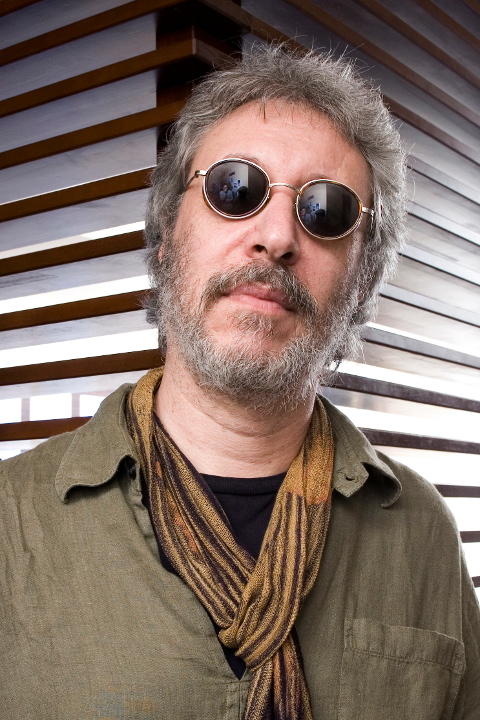 Well, those are two good questions. They’re different questions, you know. But anyway, I grew up in an area of the South Side of Chicago called Hyde Park, and that particular era of the late 60s and early 70s was a very fertile era. A lot of great blues lived nearby — Muddy Waters and Otis Spann, Howlin’ Wolf, and also a lot of the members of the AACM [Association for the Advancement of Creative Musicians — ed.] lived nearby, the Art Ensemble, Henry Threadgill. I used to hear those musicians perform a lot when I was a teenager, and that had a big impact on me, I would say. But even before that, my father was a huge, huge music fan, and he took me to hear Louis Armstrong, Duke Ellington, Stan Getz, Max Roach, Mongo Santamaria, and so much music. It was a big thing in our household also. So I guess you could say starting in the house and then moving out into the neighborhood, where it was a very fertile and amazing time in the late 60s and early 70s.
Well, those are two good questions. They’re different questions, you know. But anyway, I grew up in an area of the South Side of Chicago called Hyde Park, and that particular era of the late 60s and early 70s was a very fertile era. A lot of great blues lived nearby — Muddy Waters and Otis Spann, Howlin’ Wolf, and also a lot of the members of the AACM [Association for the Advancement of Creative Musicians — ed.] lived nearby, the Art Ensemble, Henry Threadgill. I used to hear those musicians perform a lot when I was a teenager, and that had a big impact on me, I would say. But even before that, my father was a huge, huge music fan, and he took me to hear Louis Armstrong, Duke Ellington, Stan Getz, Max Roach, Mongo Santamaria, and so much music. It was a big thing in our household also. So I guess you could say starting in the house and then moving out into the neighborhood, where it was a very fertile and amazing time in the late 60s and early 70s.
So it was mostly jazz and latin?
Well, my dad took me to hear the Chicago Symphony a lot too. I heard [Carlo Maria] Giulini conducting and [George] Solti, so also that. And also there wasn’t so much of a delineation between what’s called jazz and blues and rhythm and blues at that time where I grew up. There was a group called the Pharaohs, and they came out of Phil Cohran’s group from Sun Ra. They were kind of the pre-Earth Wind and Fire group, the Pharaohs.
I started drumming out in a park out on 55th Street by the lake called The Point and a lot of those drummers used to collect out there. I’d done classical piano when I was a kid but when I started getting really interested in music myself at about 14 years old, I started playing hand drums out in the park. It was something that came very naturally to me, you know. And at the same time I was going to these concerts. There was a concert in 1971 in the spring of the Art Ensemble of Chicago at Ida Noyes Hall at the University of Chicago that was really incredible and a pivotal kind of experience for me. One of my high school music teachers was friends with Leroy Jenkins, so she used to bring a lot of the AACM musicians into our class to do workshops and things like that. And then on Sunday afternoons you could go to the Checkerboard or Pepper’s Lounge and hear the greats like Howlin’ Wolf or Muddy Waters if you were underage.
From Howlin’ Wolf I learned something really important early on, which was the way in which the spirit of the music, the feeling of the music, can really be served and be in harmony with whatever kind of technique you want to develop, that virtuosity was really in harmony with the expression, the deep feeling of the music. That really stayed with me.
So I think you’ve already partially answered my next question which is what music excited you as a teenager?
Yeah, that was exactly it. So there were all these great concerts around the University of Chicago, and also these Sunday afternoon concerts of the AACM, so I remember hearing Marion Brown and Steve McCall playing in duet, and the Art Ensemble, the first concerts ever of the Air trio [Henry Threadgill, Fred Hopkins, Steve McCall - ed.]. And more than wanting to kind of play that music exactly, those musicians showed me that whatever you could imagine your music to be, it could be if you developed the virtuosity to be able to do it, the skills, so you had the freedom to do it — and if you had the courage to do it. So that way of approaching things is what really influenced me even deeper than wanting to emulate anything about the style of what they did or anything like that.
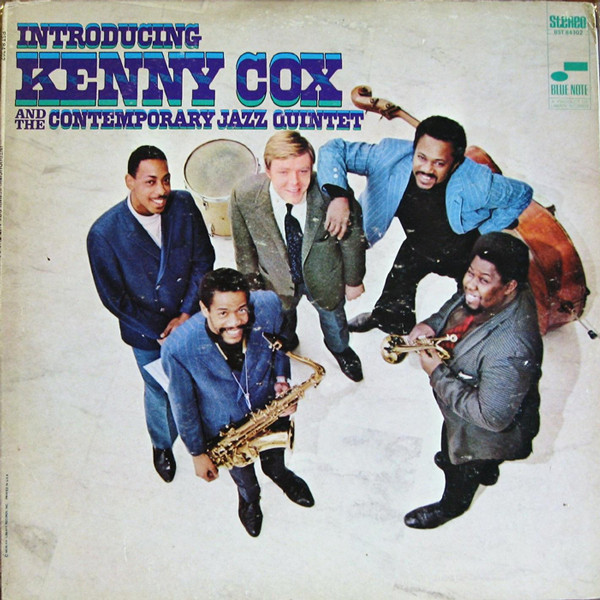 And then at the same time, as I said, there was drumming, hand drummers playing in the parks when I started playing, and by the time I was 16 I started playing with a great, great woodwind player named Maulawi Nurudeen, whose sister was married to Ahmad Jamal. He’s one of the great musicians that had many people come through his groups — Jerome Cooper, Jack DeJohnette, Rufus Reed — he was one of those kind of teacher-mentor people. I started playing with him, and about a year later Hamid Drake introduced me to Fred Anderson, and I started playing with Fred, and about a year after that I met Charles Moore and started going up to Detroit and playing with the Contemporary Jazz Quintet — Kenne Cox and the Contemporary Jazz Quintet in Detroit.
And then at the same time, as I said, there was drumming, hand drummers playing in the parks when I started playing, and by the time I was 16 I started playing with a great, great woodwind player named Maulawi Nurudeen, whose sister was married to Ahmad Jamal. He’s one of the great musicians that had many people come through his groups — Jerome Cooper, Jack DeJohnette, Rufus Reed — he was one of those kind of teacher-mentor people. I started playing with him, and about a year later Hamid Drake introduced me to Fred Anderson, and I started playing with Fred, and about a year after that I met Charles Moore and started going up to Detroit and playing with the Contemporary Jazz Quintet — Kenne Cox and the Contemporary Jazz Quintet in Detroit.
So I’ve always felt that my musical roots and education were very much on the South Side of Chicago but also in Detroit too, in terms of school.
I first encountered your playing with Mandingo Griot Society.
In Seattle?
No, I never got to see the group. It was from the records. I was wondering if you could talk about how that group came about.
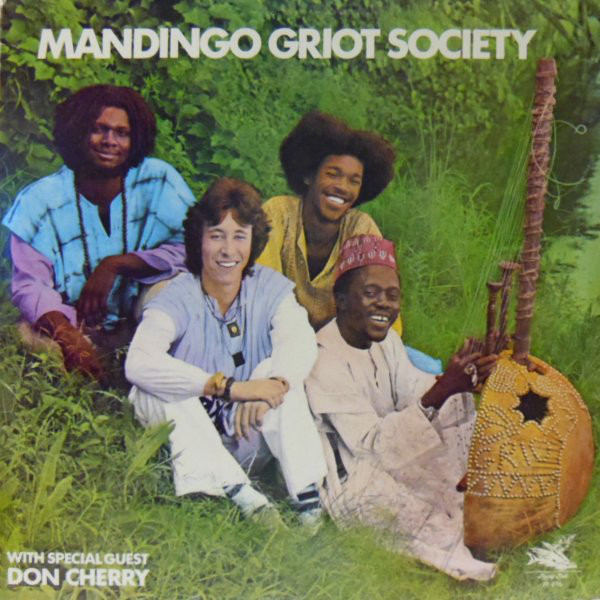 OK. So anyway, relating to this idea of having the interest and impact of what I was learning in Detroit and in Chicago, I started driving a cab in Chicago and staying with my parents and saved up enough money to go to Ghana in West Africa. I went in 1977 not really knowing anybody there, and just by chance I ended up living in a compound in an area called South Legon, and Foday Musa Suso was there also, and we became friends. It was around the time that Roots was on TV, and so we decided to start a group together — at that time there wasn’t anything really quite like that, you know. Of course, there were the great projects that Olatunji and Randy Weston and so on had done, but you know this actual collaboration with a kora player and playing that kind of music. So we came back to Chicago together and stayed at my parents’ house in Hyde Park and invited Hamid Drake and Joe Thomas to join us in the Mandingo Griot Society, and when we recorded that first album…
OK. So anyway, relating to this idea of having the interest and impact of what I was learning in Detroit and in Chicago, I started driving a cab in Chicago and staying with my parents and saved up enough money to go to Ghana in West Africa. I went in 1977 not really knowing anybody there, and just by chance I ended up living in a compound in an area called South Legon, and Foday Musa Suso was there also, and we became friends. It was around the time that Roots was on TV, and so we decided to start a group together — at that time there wasn’t anything really quite like that, you know. Of course, there were the great projects that Olatunji and Randy Weston and so on had done, but you know this actual collaboration with a kora player and playing that kind of music. So we came back to Chicago together and stayed at my parents’ house in Hyde Park and invited Hamid Drake and Joe Thomas to join us in the Mandingo Griot Society, and when we recorded that first album…
Don Cherry had always been a real hero of mine and of Hamid’s and we… I’m not even sure how we found him, but we found his number in Sweden and invited him. The record label offered us a little budget to bring him and he agreed, and he came to Chicago and we made that record, the first Mandingo Griot Society record, and then Don — I think he heard something in what Hamid and I were doing and invited us to go live with him in Sweden and then go on tour. So Hamid and I picked up and we went over there in ‘78 and spent several months in Don’s house. That’s when I started really seriously composing. Don taught me a lot about Ornette Coleman’s concepts and got me inspired to do my own compositions, and then we went on tour and ended up in France, a tour with Charlie Haden and Trilok Gurtu and a French saxophonist named Doudou Gouirand and a magician was on that tour too doing magic tricks — from Indonesia. So it was a beautiful… Don was a really important mentor for all of us, you know.
You also worked quite a bit with the band Shadowfax.
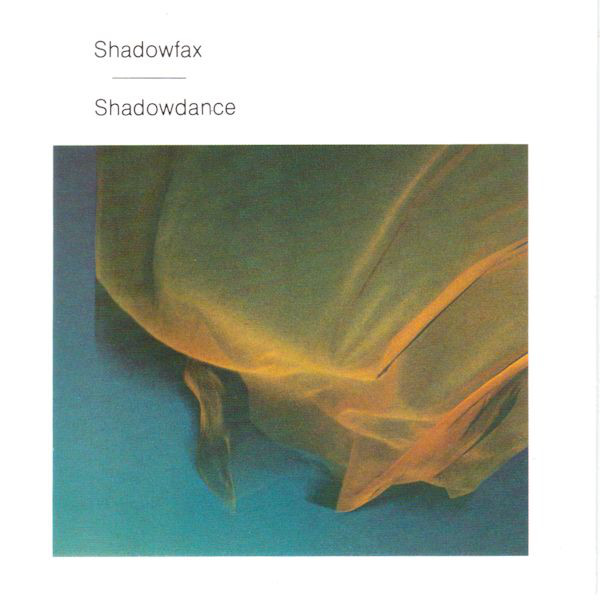 Well, not so much. I knew them… So actually what happened was the Mandingo Griot Society, when we were gigging around Chicago a lot, we somehow ended up playing on some bills opposite them, which is how I met them. And then later on when I was in California and they were also in California — I moved to Los Angeles, to Venice, California — they called me to play on some of their records, and I did one tour with them, so that wasn’t a central thing for me, but I really enjoyed their concept.
Well, not so much. I knew them… So actually what happened was the Mandingo Griot Society, when we were gigging around Chicago a lot, we somehow ended up playing on some bills opposite them, which is how I met them. And then later on when I was in California and they were also in California — I moved to Los Angeles, to Venice, California — they called me to play on some of their records, and I did one tour with them, so that wasn’t a central thing for me, but I really enjoyed their concept.
I bring it up because we’ve covered Shadowfax for many years and a lot of our readers are familiar with them. Even going back to their prog rock days on their first album.
That was Watercourse Way, right?
Yes.
So that’s around the time that I met them and then they used to call me to play with them, so I would play gigs with them, and my fond memory was going… they lived way south in the suburbs. They used to rehearse in Phil Maggini’s house in... where was it? Calumet? Somewhere way south. And I remember I went down there one winter and we got snowed in and it dropped to 70-some below wind chill. It was one of those incredible winters. I think this was ‘79 maybe — some giant snowstorm — ended up having to stay there for a few days after playing just this one gig because we got snowed in. But long after the group stopped performing, I was in touch with G.E. Stinson, and you know he also grew up playing a lot of blues music in Chicago too.
Another one of your frequent collaborators was Yusef Lateef. How did you first get together with him and how did that relationship develop over the years?
 So yes, as I mentioned, I started performing in Detroit and studying and was kind of mentored by Charles Moore and Kenne Cox of the Contemporary Jazz Quintet in ‘73. Then later, when I was in California, I started a group with Charles Moore and Ralph Jones — who was also from Detroit — called Eternal Wind, and we did three recordings for Flying Fish, the same label that did the Mandingo Griot Society records. And at that same time I started playing in a group with Bennie Maupin, so Detroit has kind of like always been a second school for me, if you will. So it was through Kenne Cox I think, somehow the Eternal Wind group got connected with Yusef Lateef. In 1988 I was living in Don Cherry’s loft in Long Island City, and Yusef asked us to do a concert with him along with Cecil McBee, so that was the first concert I did with Yusef — that we all did, and it was really incredible because Yusef, even in that very first concert — he had heard our music on recordings and was interested in what we were doing. He had been in Africa, teaching and studying and performing in Nigeria for the four years up till I think ‘86 or ‘87, and was looking, I guess, for another direction, and was really intrigued by what we were doing. So he actually asked us to bring in some music right from the get-go. Yusef was always so encouraging, and beautiful about encouraging the musicians and teaching us. We actually played some of my compositions on that very first concert, and then from there I just did many many projects with him — too many to list, but everything from being soloists with the Cologne Radio Orchestra to he and I doing many large ensemble collaborations like the double concerto, which has never been released, and The World at Peace, which has, and in the last years we did a lot of duet concerts. Many, many, many duet concerts, and really developed a language with that. So he became a mentor, a teacher, like a brother, a father figure, and also family friend after a while. We talked every week and we worked together for 25 years, and in addition at the same time I was doing my own projects which I’m continuing to do. And the last tour we did was in Europe in 2012 when he was 92 years old. We did a duet tour then, and the next year we did a duet concert in New York, and then he passed away that winter. Actually on my website there’s an article I wrote for New Music USA when he passed away in tribute, if people want to have a link to it and know more about him. I encourage them to find out more about him.
So yes, as I mentioned, I started performing in Detroit and studying and was kind of mentored by Charles Moore and Kenne Cox of the Contemporary Jazz Quintet in ‘73. Then later, when I was in California, I started a group with Charles Moore and Ralph Jones — who was also from Detroit — called Eternal Wind, and we did three recordings for Flying Fish, the same label that did the Mandingo Griot Society records. And at that same time I started playing in a group with Bennie Maupin, so Detroit has kind of like always been a second school for me, if you will. So it was through Kenne Cox I think, somehow the Eternal Wind group got connected with Yusef Lateef. In 1988 I was living in Don Cherry’s loft in Long Island City, and Yusef asked us to do a concert with him along with Cecil McBee, so that was the first concert I did with Yusef — that we all did, and it was really incredible because Yusef, even in that very first concert — he had heard our music on recordings and was interested in what we were doing. He had been in Africa, teaching and studying and performing in Nigeria for the four years up till I think ‘86 or ‘87, and was looking, I guess, for another direction, and was really intrigued by what we were doing. So he actually asked us to bring in some music right from the get-go. Yusef was always so encouraging, and beautiful about encouraging the musicians and teaching us. We actually played some of my compositions on that very first concert, and then from there I just did many many projects with him — too many to list, but everything from being soloists with the Cologne Radio Orchestra to he and I doing many large ensemble collaborations like the double concerto, which has never been released, and The World at Peace, which has, and in the last years we did a lot of duet concerts. Many, many, many duet concerts, and really developed a language with that. So he became a mentor, a teacher, like a brother, a father figure, and also family friend after a while. We talked every week and we worked together for 25 years, and in addition at the same time I was doing my own projects which I’m continuing to do. And the last tour we did was in Europe in 2012 when he was 92 years old. We did a duet tour then, and the next year we did a duet concert in New York, and then he passed away that winter. Actually on my website there’s an article I wrote for New Music USA when he passed away in tribute, if people want to have a link to it and know more about him. I encourage them to find out more about him.
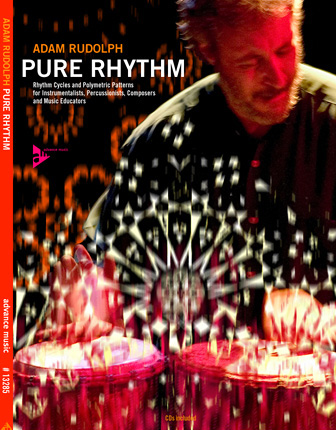 So now let’s switch over to your book Pure Rhythm. When I first read about your concept of Cyclic Verticalism — you know the introduction to the book is available online, and I read through that and I said, “Well, that’s the way I think about it too, only explained more clearly.”
So now let’s switch over to your book Pure Rhythm. When I first read about your concept of Cyclic Verticalism — you know the introduction to the book is available online, and I read through that and I said, “Well, that’s the way I think about it too, only explained more clearly.”
No kidding? OK.
I’d been composing and listening to rhythm and thinking about rhythm and how it fits together mathematically with the threes and twos and stacking them on top of each other, but I hadn’t really put it as clearly as you did, so it was really like finding a home.
That’s interesting. How did you start thinking about it that way? Why did you start thinking that way?
I think going back to the first time I heard Dave Brubeck playing in odd meters I became fascinated by that, and then at some point realized that there are places in the world where there is nothing unusual about those meters…
Right, right.
...It’s just part of the culture, and then hearing you describe about how the odd rhythms in Balkan folk music are based on dance steps, which seems kind of ironic because one of the jokes musicians often say is “Here’s a piece in 11/8 — try to dance to it.”
Right, and yet they do of course.
So anyway, can you tell me a little bit about how you developed your concept and really put it together?
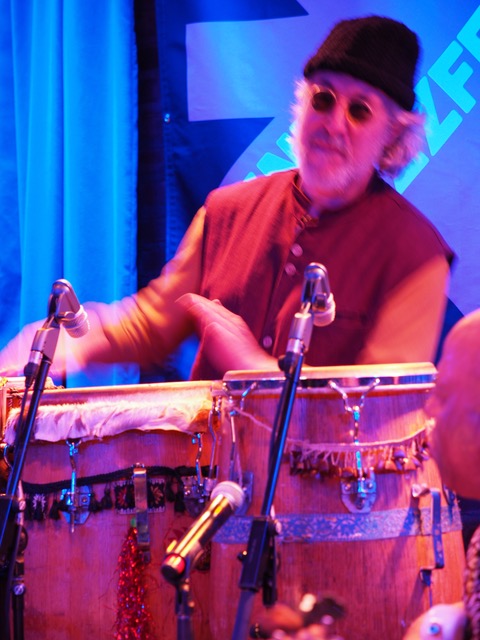 All that way back when I was living on the South Side of Chicago and started playing hand drums and right from the get-go I felt like I wanted to develop a language on hand drums that could play the music that I heard in my head. So while I felt it was important to study folkloric drumming of different kinds, and I wanted to learn everything I could about every kind of music, you know, and so I started studying tabla, North Indian drumming, at that time. But when I went to Ghana in 1977, that was a pivotal experience for me, a life-changing experience in a lot of ways having to do with the understanding of the relationship of mysticism and communal transcendence to music, but also, in reference to your inquiry, there was so much... there’s nothing that can prepare you for how many different kinds of musical rhythms there are there, and the depth and breadth of it and it was almost overwhelming. Also I realized that because the music is so much of a lived philosophy and so connected to the life, that you couldn’t ever really as an outsider become a master of these things, because the music was about so much more than music. But also that any one of these rhythm traditions, you could spend your whole lifetime working on it.
All that way back when I was living on the South Side of Chicago and started playing hand drums and right from the get-go I felt like I wanted to develop a language on hand drums that could play the music that I heard in my head. So while I felt it was important to study folkloric drumming of different kinds, and I wanted to learn everything I could about every kind of music, you know, and so I started studying tabla, North Indian drumming, at that time. But when I went to Ghana in 1977, that was a pivotal experience for me, a life-changing experience in a lot of ways having to do with the understanding of the relationship of mysticism and communal transcendence to music, but also, in reference to your inquiry, there was so much... there’s nothing that can prepare you for how many different kinds of musical rhythms there are there, and the depth and breadth of it and it was almost overwhelming. Also I realized that because the music is so much of a lived philosophy and so connected to the life, that you couldn’t ever really as an outsider become a master of these things, because the music was about so much more than music. But also that any one of these rhythm traditions, you could spend your whole lifetime working on it.
So I began to think, “Well, how can you extrapolate? Even while you’re learning particularities of these rhythms and musics, how can you extrapolate some of the universals, and what are these universals?” What is the relationship [between] tabla and Elvin Jones and Ewe drumming — what are those things that connect them? And that’s when I started thinking about rhythm not just as dance, understanding the relationship of it to dance, and to language of course, which is the deepest connection, but also the mathematics, because the mathematics allow you to really look at universal elements. And like in theoretical physics, when you go into the higher dimensions, the laws become more and more simple. The same is true in music, and so I began to realize that while the Indian… or when you hear Balkan rhythms it’s this idea of additive rhythms, three plus two, three plus three plus two. Two plus three plus two plus three, you get jhaptal, ten beat cycles, the same thing was going on with this three and two of the layering of what I was hearing and loved about say Elvin Jones or Tony Williams. So it helped me to sort of extrapolate the principles, to understand the underlying elements that infused all these different rhythm styles. And that way I could begin to develop them in my own language, what I wanted to do with the rhythm, and composing in general, not just rhythm.
One thing that I really like about it is that it’s a descriptive framework, not a prescriptive one. It doesn’t present rules as in what’s right and wrong, it just describes how things work.
Ah, yeah, thanks, that’s a good way to think about it.
In college I studied linguistics, and there’s descriptive linguistics, where you study a language and say, “This is how it works and this is how people communicate.” Or there’s prescriptive grammar, which is like the professor who says, “That is an improper sentence, you must do it this way.”
 That’s interesting, I’ve been so fascinated by linguistics... I’ve done my little attempts at reading Noam Chomsky — he’s the most famous — but it’s pretty deep, you know. What’s interesting for me is, for example in my Go: Organic Orchestra score where I use these matrices, these interval matrices, and I also create in the score these interval cosmograms, and what that allows is for people to look at something — you know, who decided that it has to be these little black dots on a page that you’ve got to read left to right? So if you could also look right to left and down and up and different combinations — something you can’t do in language. In spoken language you can’t speak backwards, but you can certainly play a melodic line backwards, right? And that opens up a lot of the idea of semantics and syntax too, right? In musical applications it’s so interesting. So with rhythm too, of course, you can play a rhythm forward or backwards and it takes on another kind of meaning, which is so interesting. So the mathematics work in the rhythm and also in these interval structures that I use as a composer. They serve as this framework. I don’t know a lot about linguistics, but I know that there’s this idea of these frameworks or people looking for these universal grammatical rules, not rules but…
That’s interesting, I’ve been so fascinated by linguistics... I’ve done my little attempts at reading Noam Chomsky — he’s the most famous — but it’s pretty deep, you know. What’s interesting for me is, for example in my Go: Organic Orchestra score where I use these matrices, these interval matrices, and I also create in the score these interval cosmograms, and what that allows is for people to look at something — you know, who decided that it has to be these little black dots on a page that you’ve got to read left to right? So if you could also look right to left and down and up and different combinations — something you can’t do in language. In spoken language you can’t speak backwards, but you can certainly play a melodic line backwards, right? And that opens up a lot of the idea of semantics and syntax too, right? In musical applications it’s so interesting. So with rhythm too, of course, you can play a rhythm forward or backwards and it takes on another kind of meaning, which is so interesting. So the mathematics work in the rhythm and also in these interval structures that I use as a composer. They serve as this framework. I don’t know a lot about linguistics, but I know that there’s this idea of these frameworks or people looking for these universal grammatical rules, not rules but…
Patterns.
Patterns that you can kind of clothe it with any language you want, and that’s what I’ve done when I’ve developed these signal rhythms that I use in my composition, or these interval patterns that can be draped with any kind of orchestration you want, or any application you want.
You’ve got several different groups that you lead — Moving Pictures, Go: Organic in its various incarnations, and Hu Vibrational. How do you think of them as different entities?
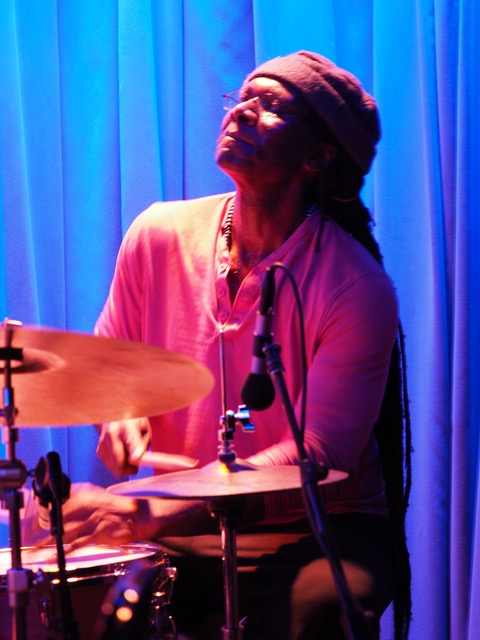 One of the exciting things about being an artist is being interested in process, and so when you can generate and think of new processes, you can actually come up with prototypical art, you know. And of course, we can have a variety of interests. Not by way of comparison, but just to say if you look at Picasso — he made constructions and sculptures and paintings and ceramics, and they were all different media but they all projected somehow the idea of him, his voice, through them. So I’m interested in a lot of different things — my next release coming out is going to be all through-composed music, a couple string quartets, a percussion quartet, chamber orchestra, but a lot of the elements that we’ve just been talking about that I’m interested in appear in those in a different way.
One of the exciting things about being an artist is being interested in process, and so when you can generate and think of new processes, you can actually come up with prototypical art, you know. And of course, we can have a variety of interests. Not by way of comparison, but just to say if you look at Picasso — he made constructions and sculptures and paintings and ceramics, and they were all different media but they all projected somehow the idea of him, his voice, through them. So I’m interested in a lot of different things — my next release coming out is going to be all through-composed music, a couple string quartets, a percussion quartet, chamber orchestra, but a lot of the elements that we’ve just been talking about that I’m interested in appear in those in a different way.
The biggest difference I guess between Moving Pictures and Go: Organic Orchestra is that I play percussion in Moving Pictures, and in the Go: Organic Orchestra I’ve developed my own language of conducting, and I use this particular score that I said, this three page — it’s not really a graphic score because there’s not graphics, but interval matrices and cosmograms and what I call ostinatos of circularity, those three elements. And I have a series of hand signals. I have my home base New York Orchestra, and then I teach it and go all over the world. I have orchestras now in many countries where I work with the musicians on a regular basis. It doesn’t matter what the instrumentation is, or the orchestration, really. But with Moving Pictures it’s a singular group of musicians, most of whom I’ve worked with for many, many years. Like all of the musicians on this Glare of the Tiger I’ve worked with for… they’ve all played in my New York Go: Organic Orchestra for the last five, seven, 12 years, but then some musicians like Hamid Drake — we met when we were 14 years old, and Ralph Jones I met in 1973 in Detroit, so we’ve had long, long associations. The musicians where we share ideas — they’re what I call “research and development” musicians, kind of like what we’re talking about now — musicians who are interested in studying and evolving and looking into elements — those are the kind of musicians I gravitate towards. Another big difference is that the music I compose for Moving Pictures is written with those musicians in mind, and the Go: Organic Orchestra has to do with more general, broader concepts, but they do share this thing where I’ve always been interested in form and how to work with form, how to generate form, because form is something that in nature is always in a process of transformation, of becoming — but also, how do you generate form as a compositional tool and an arena to inspire musicians and to challenge them and to have different ideas of the functionality of what instruments can do?
One of the things I enjoyed about Glare of the Tiger is that you can listen to it and it just grooves along and it’s really enjoyable. It’s got a lot of energy, but it’s like a fractal — the closer you look, the more detail you see. And since I know that most of the pieces are based on stacked rhythms, it’s like a puzzle to figure out what the patterns are in each one of the tunes.
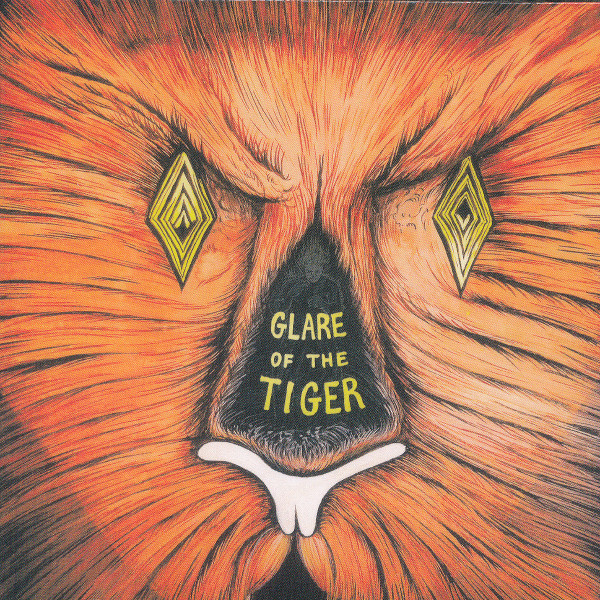 Fractal. You hit the nail on the head with that. In the compositions there’s this interplay of trying to compose music that’s a vehicle for these particular musicians, to allow them to really shine — the idea of putting together a group where there’s a kind of chemistry between the musicians. But what you’re referencing is the construct. So the compositional construct has two sides to it. One is the rhythms that are in the Pure Rhythm book — it’s not just a theoretical idea, it’s a practicum. So the way, like in North Indian music, there’s hundreds of talas, but there’s about seven of them that they use all the time. So I use what I call “signal rhythms” that I’ve developed, my own signal rhythms, and they find many different guises and plug in, kind of like the idea of language where we use words, or even smaller than words, and then there become words and then they become little cliché items that we can plug in that we use. So these different rhythm cycles, signal rhythms, can be applied, can be used in a lot of different compositional ways so the musicians become familiar with them and they become language. At the same time I have these interval systems that I’m interested in — ways of organizing twelve tones, and then also microtonal aspects, that become an arena for the musicians to be able to have a dialog in. They have a certain functionality that they do in the composition, and within that they’re as free as they want to be able to dialog. In some ways this music is even more connected to the music of Louis Armstrong’s Hot Five or Hot Seven, where there’s more than just a soloist out front being backed by a rhythm section. There’s really a lot of this dialog that goes on all the time — it’s not really soloistically oriented.
Fractal. You hit the nail on the head with that. In the compositions there’s this interplay of trying to compose music that’s a vehicle for these particular musicians, to allow them to really shine — the idea of putting together a group where there’s a kind of chemistry between the musicians. But what you’re referencing is the construct. So the compositional construct has two sides to it. One is the rhythms that are in the Pure Rhythm book — it’s not just a theoretical idea, it’s a practicum. So the way, like in North Indian music, there’s hundreds of talas, but there’s about seven of them that they use all the time. So I use what I call “signal rhythms” that I’ve developed, my own signal rhythms, and they find many different guises and plug in, kind of like the idea of language where we use words, or even smaller than words, and then there become words and then they become little cliché items that we can plug in that we use. So these different rhythm cycles, signal rhythms, can be applied, can be used in a lot of different compositional ways so the musicians become familiar with them and they become language. At the same time I have these interval systems that I’m interested in — ways of organizing twelve tones, and then also microtonal aspects, that become an arena for the musicians to be able to have a dialog in. They have a certain functionality that they do in the composition, and within that they’re as free as they want to be able to dialog. In some ways this music is even more connected to the music of Louis Armstrong’s Hot Five or Hot Seven, where there’s more than just a soloist out front being backed by a rhythm section. There’s really a lot of this dialog that goes on all the time — it’s not really soloistically oriented.
You’ve spoken about your compositional process, the rhythmic part and the intervals. Do you treat them separately, where you think of a rhythm and ask what kind of intervals to put with it?
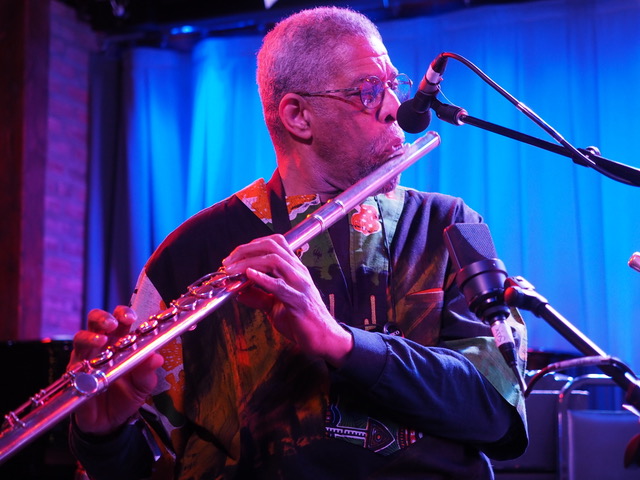 The more processes you can develop, and the more ways of approaching things, I think the more ideas and the more myriad expressions you can some up with in your art. So there’s not really any one way — sometimes I’ll be fiddling around with some intervals or a melody might just come into my mind and then I — as we say, when the muse smiles upon you, and something comes to you, a rhythm or a melodic fragment or harmonic motion. And then it just comes to you, and then I might go back and analyse what it is. It came to me intuitively, so there’s always this interplay between intuition and the intellect and the heart, which would be the feeling aspect. So the dance between those three things, the intuition, the intellect, and the heart, the feeling part of it, varies from one piece to another. And then the application of it, working with these musicians too, bring it to life. So I try… like in the string quartets every t is crossed and i is dotted, but if I’m writing for someone like Ralph Jones I don’t want to overwrite. He plays woodwinds the way I would if I could, you know. So I can have a lot of trust in him to interpret. The same with Graham Haynes or with Alex Marcelo, the keyboard player — he worked with me for years with Yusef Lateef, so he has a lot of the understanding of the same harmonic materials that I do. But he’s a lot faster at it, more advanced, so I want to leave room for him within that. So I’ll give him a structural reference, like maybe the piece will be moving through the symmetric hexatonic scale, for example, the different permutations of that. So I’ll have those written out, but then he can take it as far as he can go, because ultimately what I’m looking for with the music is for the musicians to have as much freedom as possible. It might sound like a dichotomy that when I’m using these elements in very particular ways it’s actually something that leads to more freedom, but that’s how it is. Everybody has this interplay between form and freedom or emptiness and form — that’s the dance, that’s where all the action takes place.
The more processes you can develop, and the more ways of approaching things, I think the more ideas and the more myriad expressions you can some up with in your art. So there’s not really any one way — sometimes I’ll be fiddling around with some intervals or a melody might just come into my mind and then I — as we say, when the muse smiles upon you, and something comes to you, a rhythm or a melodic fragment or harmonic motion. And then it just comes to you, and then I might go back and analyse what it is. It came to me intuitively, so there’s always this interplay between intuition and the intellect and the heart, which would be the feeling aspect. So the dance between those three things, the intuition, the intellect, and the heart, the feeling part of it, varies from one piece to another. And then the application of it, working with these musicians too, bring it to life. So I try… like in the string quartets every t is crossed and i is dotted, but if I’m writing for someone like Ralph Jones I don’t want to overwrite. He plays woodwinds the way I would if I could, you know. So I can have a lot of trust in him to interpret. The same with Graham Haynes or with Alex Marcelo, the keyboard player — he worked with me for years with Yusef Lateef, so he has a lot of the understanding of the same harmonic materials that I do. But he’s a lot faster at it, more advanced, so I want to leave room for him within that. So I’ll give him a structural reference, like maybe the piece will be moving through the symmetric hexatonic scale, for example, the different permutations of that. So I’ll have those written out, but then he can take it as far as he can go, because ultimately what I’m looking for with the music is for the musicians to have as much freedom as possible. It might sound like a dichotomy that when I’m using these elements in very particular ways it’s actually something that leads to more freedom, but that’s how it is. Everybody has this interplay between form and freedom or emptiness and form — that’s the dance, that’s where all the action takes place.
So the piece is like a framework rather than note-for-note, and it’s different every time, but there’s an essence there that’s the same.
Exactly. And the essence can be communicated as functional, what your function is in the orchestration of what you’re doing, but it can also be about esthetics. In Indian music they have a concept they call rasa, and rasa is the coloration. Every raga has its own rasa, a set of notes, like fragments, but the idea is to bring out the rasa, the essential feeling of it. All of these things for me, my philosophy of what I’m interested in, is the utilization of the elements and the understanding of elements and the recombination of them using innovative processes — it’s all there to serve the feeling.
It’s like the idea of myth. Myths arise from some kind of sense of human wonderment or curiosity or wanting to explain things and share revelations, right? Those myths exist in an analogy of musical style and form. So Charlie Parker, Dizzy Gillespie, they developed a certain form that nowadays people call bebop. But they weren’t trying to create something called bebop, they were expressing their feelings and connecting to that essential human quality in resonance with the time that they lived in. And that’s our job as artists, so when we go into this idea beyond myth in the primordial sense, or the cosmos of where the source of all these things is, then if we have a command of elements, then we have freedom to construct the music that can be the music of today — where we can push the boundaries. And I think the music is more powerful because it’s not some kind of stylistic reference to anything else, but it’s its own entity. Of course when you hear my music or any music, you hear things that remind you of something else, but the actual construct of it and the feeling of it — what I want is for it to be now. Because the more individualized your art is and the more focused on your own voice or the collective voice of the group, the more individualized it is, and the more in-the-moment it is, the more universal and timeless it becomes.
I’m very interested to hear how your through-composed pieces will reflect this.
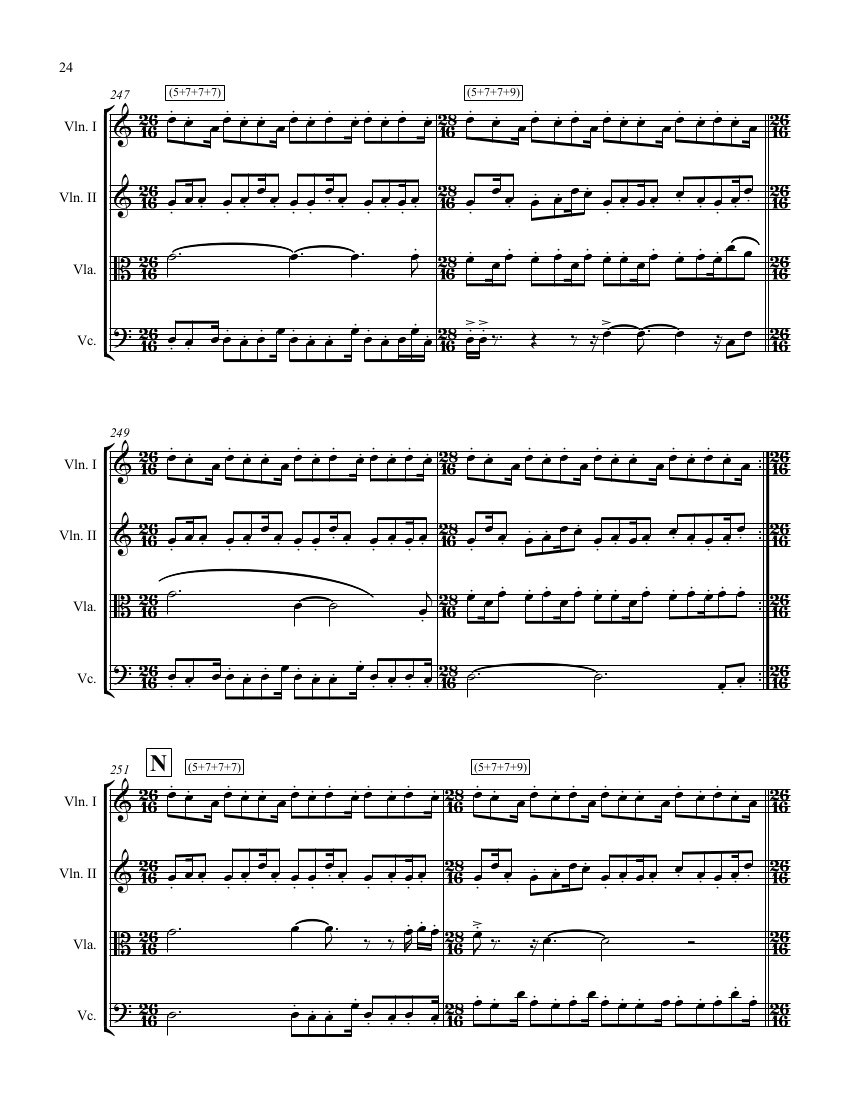 I’m writing one more piece for flute and guitar, but the album’s almost done. I’ll send you the score too if you want. All of the elements you hear, the construct — for example the piece on Glare of the Tiger that’s called “Rotations” — that’s moving in a 27 beat cycle against 18 with a particular invented scale of intervals that I used that’s a rotation. That same rhythmic cycle I use in the second of these two string quartets and what I call the “Rotations” scale, this intervallic scale shows up in the first string quartet, but in a whole other rhythmic formation. And actually that same 27 beat cycle is in the percussion quartet orchestrated for a classical percussion group, and it’s also shown up in a piece that I did with Go: Organic Orchestra called “Dance Drama Part 4.” So it’s like ragas and talas. Or like blues, blues is the best example. But there’s lots and lots of different blues — it’s a form. So what I call these ostinatos of circularity can be plugged in, and it’s not like I’m reinventing the wheel every time and people have to learn to count — my musicians know these rhythms, so when they see them in a new piece they have command of them.
I’m writing one more piece for flute and guitar, but the album’s almost done. I’ll send you the score too if you want. All of the elements you hear, the construct — for example the piece on Glare of the Tiger that’s called “Rotations” — that’s moving in a 27 beat cycle against 18 with a particular invented scale of intervals that I used that’s a rotation. That same rhythmic cycle I use in the second of these two string quartets and what I call the “Rotations” scale, this intervallic scale shows up in the first string quartet, but in a whole other rhythmic formation. And actually that same 27 beat cycle is in the percussion quartet orchestrated for a classical percussion group, and it’s also shown up in a piece that I did with Go: Organic Orchestra called “Dance Drama Part 4.” So it’s like ragas and talas. Or like blues, blues is the best example. But there’s lots and lots of different blues — it’s a form. So what I call these ostinatos of circularity can be plugged in, and it’s not like I’m reinventing the wheel every time and people have to learn to count — my musicians know these rhythms, so when they see them in a new piece they have command of them.
Are you familiar with some of the artists outside of jazz that are playing rhythmically similar things? The math-rock style, bands like Battles, or even King Crimson?
Well, you look like you’re near my age... I think about the Mahavishnu Orchestra. When they first came out, I heard them in Chicago, and it was like phenomenal, right? And even before that, Tony Williams was doing really interesting things like on his record called Ego, and also Joe Chambers.
I’m not so much interested in complexity — it’s sort of the opposite in a certain way. I’m interested in the body feeling of them. Not every rhythm qualifies to be what I call a signal rhythm. An example of a signal would be what the Cubans call clave or in New Orleans the second line rhythm. But I generate my own, like that 21 beat cycle — there’s two of them, right? To me they have to groove, you know. That’s all I can say about it — they have to have a certain kind of body feeling. It’s an intuition and it’s also... for me they shouldn’t be too long.
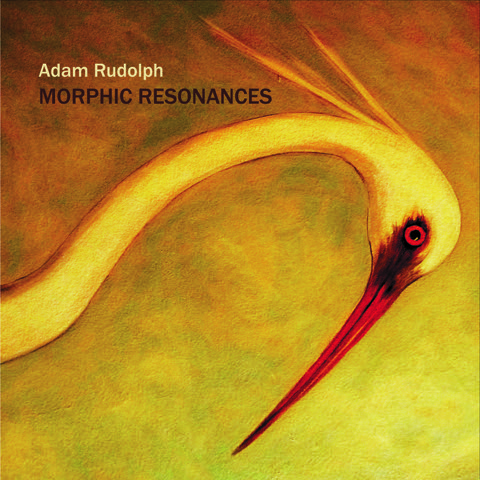 This is maybe interesting to you from your linguistic background. I met a guy, a psychologist, on an airplane, talking about mantra. He’s been doing all this research about mantras. So a mantra can’t be too long because there’s a certain sort of length that allows the brain to have this repetitive cycle of sounds going around and around. And I think the same is true with rhythms. Where people have these really long complex rhythms — but 27, that’s kind of the maximum of it, where it can still… you don’t want to think about counting anymore. You know that in your band, right? So 21, it’s like... I say there should be only one time signature, it should be 1/1! It has to feel like when you play a blues. You don’t want to think about the bar lines, you just want to think about… a whole blues is like an inhalation and another blues is an exhalation. And these rhythms, these signal rhythms, over time become a breath. And then like what Coltrane and Elvin did or Ali Akbar Khan and Zakir Hussein, you can have multiples of these big cycles moving along and each one becomes like an inhalation and an exhalation, and you’re not really counting anymore. You have to go through the counting and the studiousness just like you practice your scales, but then you’ve eaten it and it becomes part of your musical DNA. Just like you were saying a while ago, in the Balkans when they dance they’re not even thinking about 11/8 or 9/8 or 15/8, that’s just the move.
This is maybe interesting to you from your linguistic background. I met a guy, a psychologist, on an airplane, talking about mantra. He’s been doing all this research about mantras. So a mantra can’t be too long because there’s a certain sort of length that allows the brain to have this repetitive cycle of sounds going around and around. And I think the same is true with rhythms. Where people have these really long complex rhythms — but 27, that’s kind of the maximum of it, where it can still… you don’t want to think about counting anymore. You know that in your band, right? So 21, it’s like... I say there should be only one time signature, it should be 1/1! It has to feel like when you play a blues. You don’t want to think about the bar lines, you just want to think about… a whole blues is like an inhalation and another blues is an exhalation. And these rhythms, these signal rhythms, over time become a breath. And then like what Coltrane and Elvin did or Ali Akbar Khan and Zakir Hussein, you can have multiples of these big cycles moving along and each one becomes like an inhalation and an exhalation, and you’re not really counting anymore. You have to go through the counting and the studiousness just like you practice your scales, but then you’ve eaten it and it becomes part of your musical DNA. Just like you were saying a while ago, in the Balkans when they dance they’re not even thinking about 11/8 or 9/8 or 15/8, that’s just the move.
I notice when I teach young people, like some of these Go: Organic, these pieces are like 15 against 10 and I don’t tell them that, they just hear it and feel the groove of it, and they can do it because they’re not worried about the fact that it’s in 15. And the same with the scales. I mean if you tell people it’s triple diminished, they go, “Triple diminished?” But if you look at triple diminished patterns and don’t put any hierarchy, that it’s something different than a diatonic or pentatonic, it’s just another way of looking at twelve notes. Then you don’t panic. The things that people think are more “out” or complicated often really aren’t. We make them complicated, but the elements are simple. We only have six intervals that we’re working with in the Western system. So that’s simple. And we’re only really dealing with a quality of odd or even in every kind of rhythmic construct. Three and two. And even beyond the intervals, all we’re really dealing with is overtones which is also three and two. Because the dimensionality of the overtones comes from three against two also.
There are some complex rhythms like in Stravinsky where it’s very erratic and accents jump out at different times, and it can be cool, but it certainly doesn’t groove. Not like a Balkan folk dance.
It’s a gradation. I love Elliott Carter and Morton Feldman and then I love James Brown, like we all do. The whole idea of the studiousness for us as artists is to become as free as possible. So maybe you heard on Glare of the Tiger there’s a range of things, and all you want to do is paint different pictures and tell different stories. And all of that is valid and connecting to the essential quality of what it is you want to say what you’re expressing — but that’s freedom. Knowledge will set you free. Right? We know that. What is virtuosity? Virtuosity only exists relative to what it is you want to say on your instrument. I’m a self-taught hand drummer. I studied batá and Cuban drumming and African and tabla, but in terms of what I play on the drums myself, I’m an autodidact. I’m a completely self-taught composer too — you just figure it out as you go. Our ideas lead our technique.
So what’s next after this through-composed album?
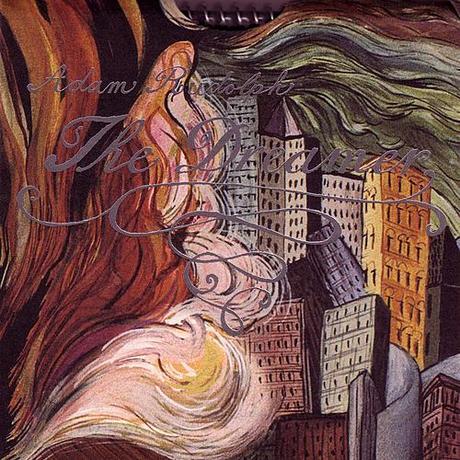 I just came home last night, I did a wonderful duet tour with Hamid Drake, just percussion. That was fantastic. I’m going to Turkey in a couple weeks to do a project. They commissioned me to create some music for a group of avant-garde musicians there. There’s actually a scene there, and gypsy musicians, these guys who can play these 9/8s into the ground. So I’m preparing some music for that. In terms of albums, we’re working on an LP release of Glare of the Tiger. And then I have a trio record that I did with Dave Liebman and Tatsuya Nakatani that’s coming out, and then I’m releasing… I did an opera [The Dreamer — ed.] several years ago that’s based on The Birth of Tragedy by Nietzsche — I don’t know if you’re a Nietzsche fan — he’s a misunderstood guy, right? My wife [Nancy Jackson] is an artist, and she did 12 paintings that go with these excerpts from The Birth of Tragedy and then I set it to music, and we performed it as a chamber opera — actually G.E. Stinson from Shadowfax played on it. Anyway, it was released as a CD and now we’re releasing it as an LP with a book of the images. And then I have a recording coming out of this project that I have with Ralph Jones called Yèyí — it’ll be our third release, a trio with Ralph Jones and Hamid Drake and myself.
I just came home last night, I did a wonderful duet tour with Hamid Drake, just percussion. That was fantastic. I’m going to Turkey in a couple weeks to do a project. They commissioned me to create some music for a group of avant-garde musicians there. There’s actually a scene there, and gypsy musicians, these guys who can play these 9/8s into the ground. So I’m preparing some music for that. In terms of albums, we’re working on an LP release of Glare of the Tiger. And then I have a trio record that I did with Dave Liebman and Tatsuya Nakatani that’s coming out, and then I’m releasing… I did an opera [The Dreamer — ed.] several years ago that’s based on The Birth of Tragedy by Nietzsche — I don’t know if you’re a Nietzsche fan — he’s a misunderstood guy, right? My wife [Nancy Jackson] is an artist, and she did 12 paintings that go with these excerpts from The Birth of Tragedy and then I set it to music, and we performed it as a chamber opera — actually G.E. Stinson from Shadowfax played on it. Anyway, it was released as a CD and now we’re releasing it as an LP with a book of the images. And then I have a recording coming out of this project that I have with Ralph Jones called Yèyí — it’ll be our third release, a trio with Ralph Jones and Hamid Drake and myself.
But then the long-term thing is I’ve been working on a book about some of these ideas with the Go: Organic Orchestra, sort of bringing together a lot of the musical material but also the philosophical ideas that surround it. And actually next month, June — you know how you have your back-burner projects and your front-burner ones? — that one seems to be staying on the back burner, so I want to try to get away from my music composing and put that up front. And then we have a little tour we’re trying to do of the Moving Pictures — it’s very tough times. I know it sounds like a lot of things going on, but you and I both know it looks good on paper when in fact it’s quite a challenge now to be working as an artist to be performing your music. I mean, I’d like to be performing with Moving Pictures more because the music we do, the way we develop the music, is through performance of course.
The financial and business part of it.
 All of us artists, we’re sort of living in this realm of the extraordinary, you know. We’re in this other realm that doesn’t really have to do with time and bills, and we’re in this other world all the time but we somehow have to figure out a way to do that. My philosophy as an artist over the years is to shoot the arrow and paint the bullseye around it. You have a vision of what you want to do as an artist, your raison d’être, and you want to make a contribution to culture and something positive in the world, and share the discoveries we have, then you have to find a way to do it — it’s not the hardest thing in the world, but it’s not easy. Anyway, that’s how things are unfolding. I want to write more music and keep moving to the next thing and put these recordings out.
All of us artists, we’re sort of living in this realm of the extraordinary, you know. We’re in this other realm that doesn’t really have to do with time and bills, and we’re in this other world all the time but we somehow have to figure out a way to do that. My philosophy as an artist over the years is to shoot the arrow and paint the bullseye around it. You have a vision of what you want to do as an artist, your raison d’être, and you want to make a contribution to culture and something positive in the world, and share the discoveries we have, then you have to find a way to do it — it’s not the hardest thing in the world, but it’s not easy. Anyway, that’s how things are unfolding. I want to write more music and keep moving to the next thing and put these recordings out.
I’ve been happy to have my own label so I have an outlet for what I do since 1992, and sometimes I license, like I licensed the Go: Organic Guitar record with Cuneiform. I believe we should keep our ownership, keep our masters and have ownership. So we put that out, and I hope to do more with that group too. That’s what I do, I go to LA every year, I go to Austin every year, I go to Chicago, and Istanbul and places in Europe, Naples, so once the musicians kind of learn the concept then when I come back we can keep developing it, you know.
I feel so fortunate. You know this music is an oral tradition. We look at how Charlie Parker played with Jay McShann, Miles Davis with Charlie Parker, John Coltrane with Miles Davis and McCoy Tyner. This idea of mentors and this oral tradition, and it was not so much information as creative attitude that was passed on. I’m really fortunate that as a young guy — as we talked about before — with Fred Anderson and Maulawi Nurudeen and Charles Moore — Kenne Cox as a young person and then later Don Cherry and Yusef Lateef being my mentors. So you get older and it’s like whatever we know we want to share, and Go: Organic Orchestra has become the vehicle for me to share a lot of wonderful knowledge and ideas with everybody, and it doesn’t matter if you’re a jazz musician or you’re 12 years old or 80 years old or a man or a woman or a classical musician or rock and roll or laptop — everybody can get in and create something together — that’s what I love about that project.
It's amazing that it's so inclusive and adaptable. Well, we’ve been talking for more than an hour now, and it’s getting pretty late on your side, so I’d like to thank you for your time. I'm sure our readers will enjoy reading what you've had to say.
Filed under: Interviews
Related artist(s): Bennie Maupin, Trilok Gurtu, Shadowfax, Yusef Lateef, Charlie Haden, Adam Rudolph / Moving Pictures / Go: Organic Orchestra, Mandingo Griot Society, Hamid Drake
What's new
These are the most recent changes made to artists, releases, and articles.
- Release: Trio of Bloom - Trio of Bloom
Updated 2025-12-29 17:19:40 - Artist: Trio of Bloom
Updated 2025-12-29 17:16:50 - Artist: Craig Taborn
Updated 2025-12-29 17:02:15 - Release: Family - Old Songs, New Songs
Updated 2025-12-29 00:03:41 - Review: The Kirkbys - It's a Crime: The Complete Recordings
Published 2025-12-29 - Release: Various Artists - Psychedelic Underground 20
Updated 2025-12-28 23:33:26 - Artist: Dhope
Updated 2025-12-28 23:27:49 - Artist: Tin Pan Alley
Updated 2025-12-28 23:21:39 - Release: Various Artists - Psychedelic Underground 19
Updated 2025-12-28 23:04:15 - Review: Earthbound - Earthbound
Published 2025-12-28 - Review: Olgoj - A Place to Rest
Published 2025-12-27 - Release: John Weider - John Weider
Updated 2025-12-26 19:13:54 - Artist: John Weider
Updated 2025-12-26 19:09:52 - Release: Moonrider - Moonrider
Updated 2025-12-26 18:51:45 - Artist: Moonrider
Updated 2025-12-26 18:49:51 - Release: Octopus Syng - Insanity Is the Song We Sing
Updated 2025-12-26 12:53:35 - Release: Tre Spiritus - Tre Spiritus
Updated 2025-12-26 12:49:13 - Artist: Tre Spiritus
Updated 2025-12-26 12:48:34 - Release: Arpia - Festa Grande
Updated 2025-12-26 12:42:27 - Release: Sigmund Freud - Risveglio
Updated 2025-12-26 12:37:54
